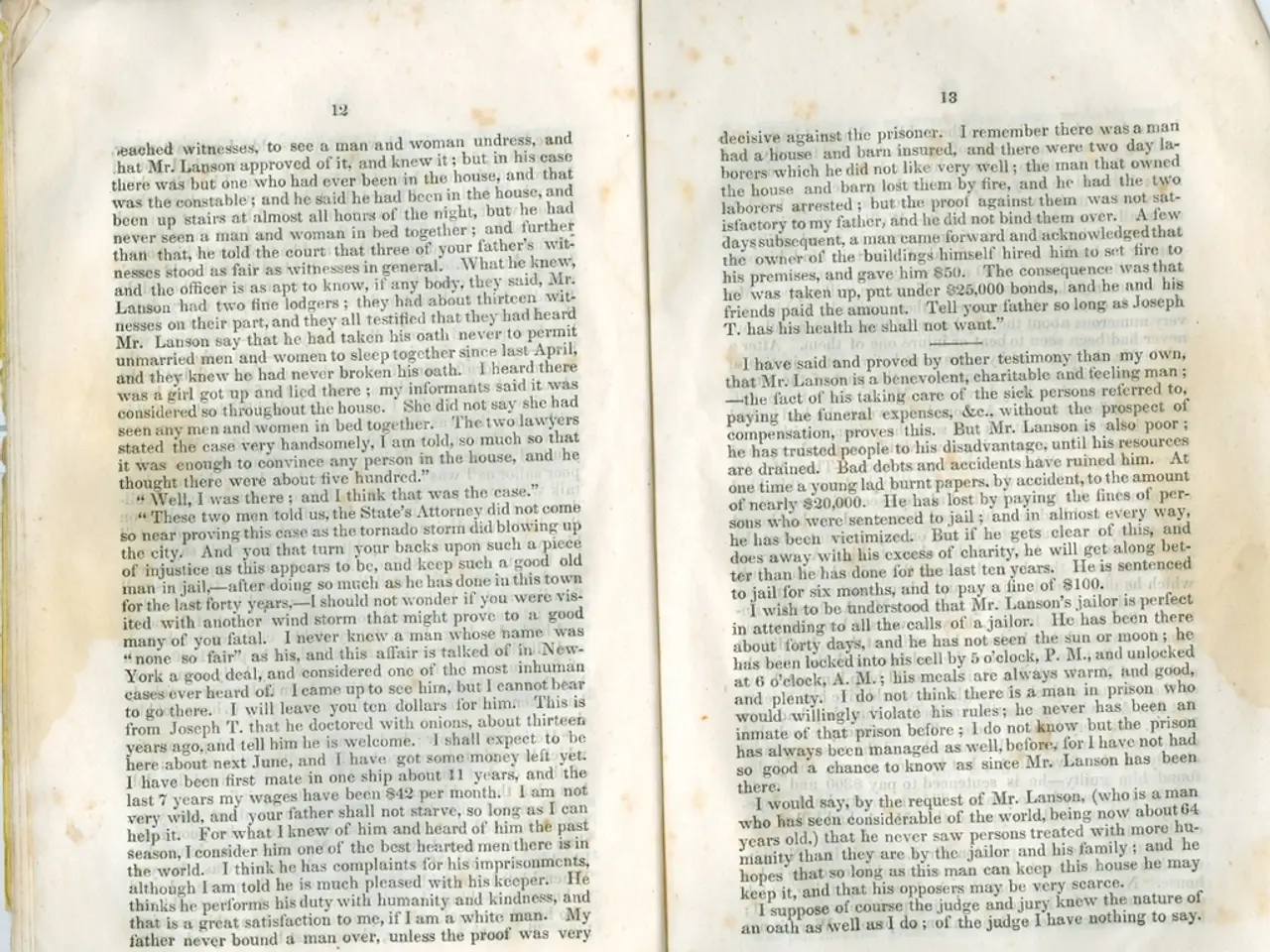Number of Pages in the Holy Quran: Investigating Variations and Printing Variants
Digital Qurans, with their flexibility in terms of font size and display settings, have become a popular alternative to traditional printed editions. However, they lack the physical pages found in traditional Qurans.
The standard printed Quran, typically consisting of around 604 pages, is beneficial for memorization due to its consistent structure and predictable divisions. This version, often referred to as the Ottoman script or the Medina script standard, is based on the Quran compiled during the reign of Caliph Uthman ibn Affan.
The page count of a Quran edition can vary significantly due to several physical and design factors. The style of calligraphy or script used can affect the layout and spacing of the text, with the Indo-Pak script potentially differing from the Madani Mushaf script. Larger fonts will generally increase the page count as more pages are needed to accommodate the text. Wider margins or additional spacing between lines and around the text can also increase the overall number of pages.
Another factor that can significantly impact the page count is the inclusion of translations and commentary. These additions can double or triple the number of pages due to the additional content.
The Quran is divided into 30 equal parts, known as Juz'. In the standard 604-page Quran, each Juz' begins at the top of a page. Smaller pocket-sized Qurans have a reduced page count due to smaller font sizes and condensed layouts, while large print editions have a higher page count due to the increased font size and spacing.
Regardless of the page count, the essential content of the Quran remains unchanged across different editions. The Quran consists of 114 chapters, known as Surahs, each composed of verses called Ayahs. The division into Surahs and Ayahs is fundamental to the structure of the Quran, allowing for easy referencing and memorization.
The core Arabic text of the Quran has been preserved meticulously over centuries, and various copies are consistently checked against established standards to ensure accuracy. The Quran's flexibility, whether in digital or printed form, continues to make it accessible to millions of people around the world.
Education and self-development can be supplemented by studying different Quran editions, each with varying page counts and features. The design factors such as font sizes, calligraphy styles, and additional content like translations and commentary can influence the page count significantly.




